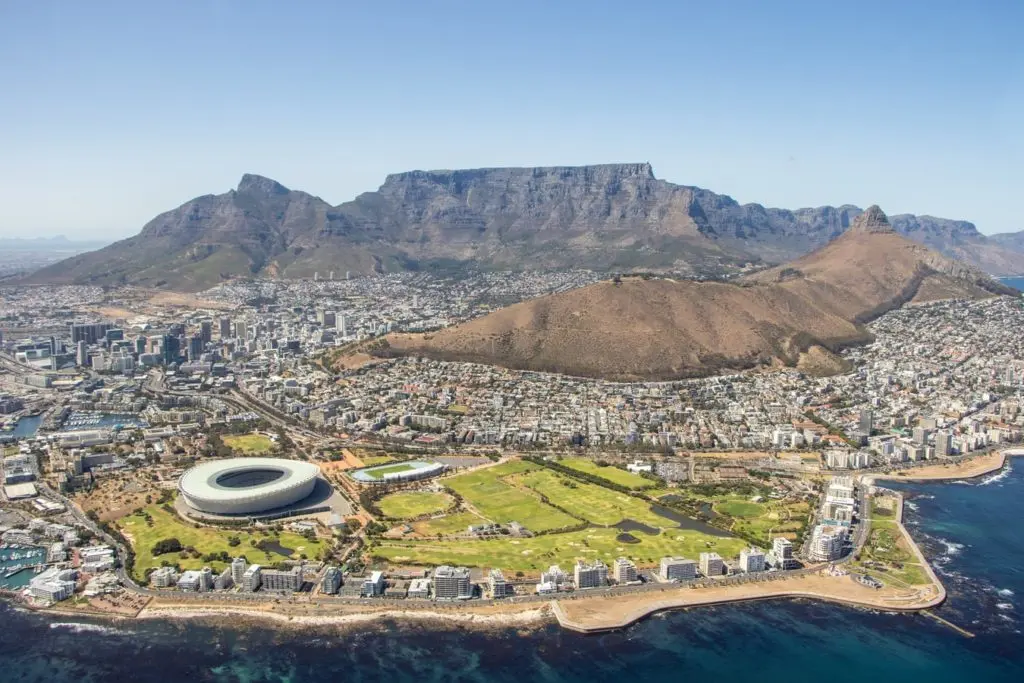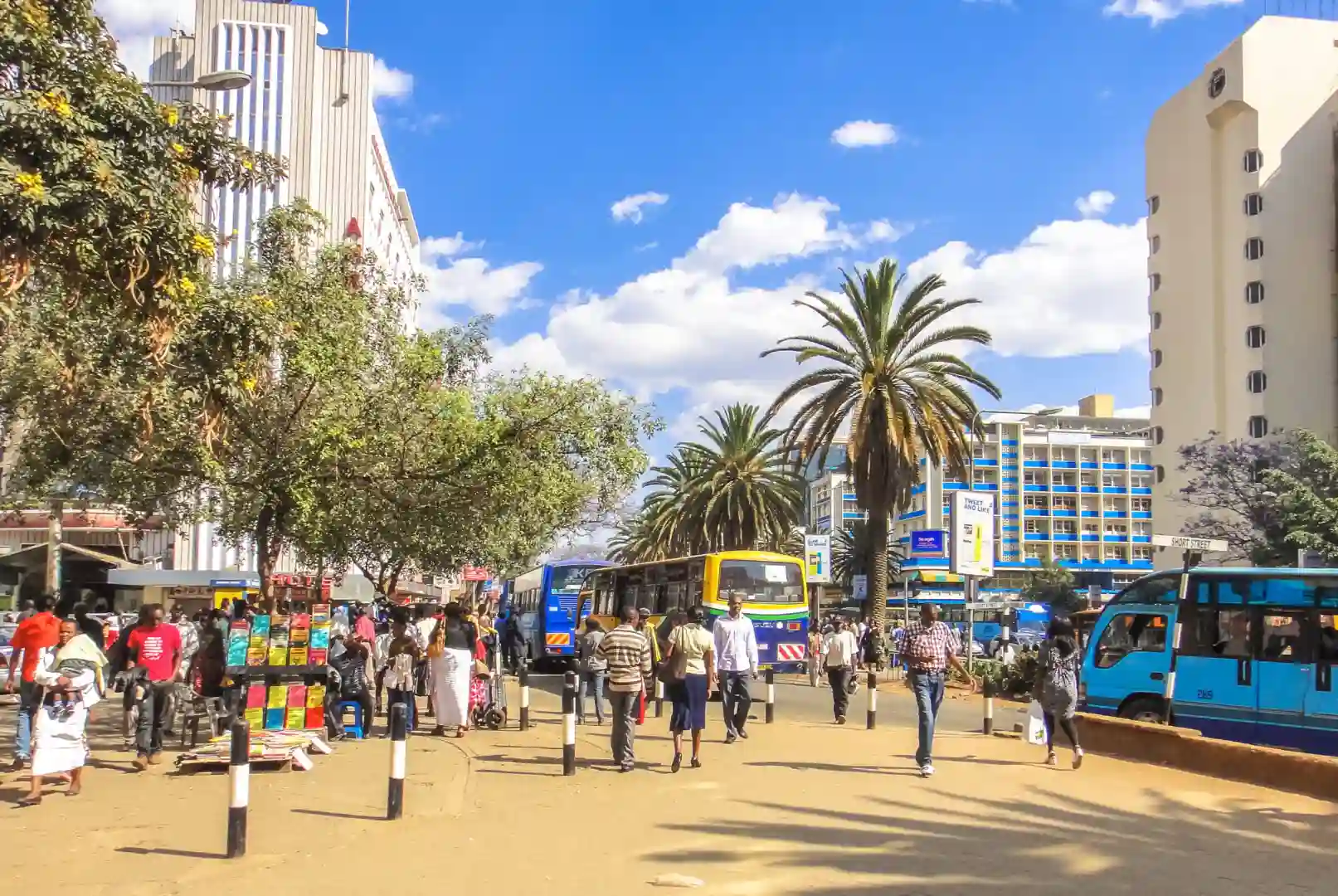The City of Cape Town has unveiled a staggering R71.2 billion (approximately $3.9 billion) investment plan over the next three years, targeting critical infrastructure upgrades and a significant shift towards diversified and sustainable electricity supply. This monumental commitment positions Cape Town at the forefront of South Africa’s energy transition, aiming to drastically reduce its reliance on the beleaguered national power utility, Eskom, and build a resilient, future-fit municipal electricity service.
The city’s mayoral committee member for energy, Xanthea Limberg, outlined the comprehensive strategy, emphasizing three core pillars: extensive streetlighting enhancements, the multi-year refurbishment of the vital Steenbras pumped storage power plant, and an accelerated solar PV program, including continued investment in city-owned solar facilities. This strategic outlay is not merely about keeping the lights on; it’s a holistic approach to energy security, economic stability, and environmental sustainability in the face of South Africa’s persistent electricity crisis.
South Africa’s Energy Crisis: The Context for Cape Town’s Ambition
Cape Town’s proactive energy strategy is born out of necessity, driven by South Africa’s prolonged and severe electricity crisis, commonly known as “load shedding.” For over a decade, the nation has grappled with scheduled power outages implemented by Eskom, the state-owned power utility, to prevent the total collapse of the national grid. This crisis has had devastating consequences across all sectors of the South African economy and society.
The Economic and Social Toll of Load Shedding
The economic impact of load shedding has been catastrophic. According to the South African Reserve Bank (SARB), load shedding has cost the economy between R204 million and R899 million for every 6 to 12 hours of outages. Businesses, from small enterprises to large corporations, have faced immense disruptions, leading to lost productivity, damaged machinery, and increased operational costs. Major retail chains, for instance, have reported staggering expenses: Pick n Pay reportedly spent close to R350 million on diesel in 10 months, while Shoprite incurred a billion rand annually to power generators and mitigate the impact of outages. This directly impacts profitability, hinders job creation, and deters both local and foreign investment.
Beyond the economic figures, the social impact is profound. Load shedding disrupts daily life, affecting everything from education and healthcare to household safety and access to essential services. Communities are plunged into darkness, impacting security, food preservation, and the ability to work or study from home. The psychological toll of constant uncertainty and inconvenience also weighs heavily on citizens.
Eskom’s Challenges and National Reforms
Eskom, once a global leader in electricity provision, has been plagued by a myriad of challenges, including aging infrastructure, insufficient maintenance, widespread corruption, and a massive debt burden. Many of its coal-fired power plants are old and prone to breakdowns, leading to a significant shortfall in generation capacity. The utility’s financial woes are exacerbated by non-payment from municipalities, which collectively owe billions of rand for electricity supplied.
In response to this protracted crisis, the South African government has embarked on various reforms under the Energy Action Plan, announced by President Cyril Ramaphosa in July 2022. Key aspects of this plan include:
- Fixing Eskom: Improving the performance and availability of existing power stations through enhanced maintenance and operational efficiency.
- Enabling Private Investment: Accelerating private sector participation in electricity generation, particularly from renewable sources.
- Accelerating Procurement: Fast-tracking the procurement of new generation capacity from renewables, gas, and battery storage.
- Unleashing Rooftop Solar: Encouraging households and businesses to invest in rooftop solar PV systems.
- Sector Transformation: Fundamentally reforming the electricity sector to achieve long-term energy security, including the unbundling of Eskom into separate generation, transmission, and distribution entities. The establishment of the National Transmission Company of South Africa (NTCSA) is a key step in this direction, aiming to create an independent system and market operator.
It is within this challenging national context that Cape Town’s R71.2 billion investment plan emerges as a beacon of hope, demonstrating a municipal-led initiative to carve out a more stable and sustainable energy future for its residents and businesses.
Cape Town’s Three-Pronged Energy Strategy
The City of Cape Town’s energy directorate’s R71.2 billion budget over the next three years is strategically allocated across three interconnected pillars, designed to enhance energy security, promote sustainability, and improve service delivery.
1. Streetlighting Enhancements: Illuminating the Smart City
A significant portion of the investment, including R75.5 million this year and an additional R160 million over the next three years for its LED streetlight replacement program, is dedicated to modernizing the city’s public lighting infrastructure. This is more than just an aesthetic upgrade; it’s a fundamental step towards building a “smart city.”
The transition to LED (Light Emitting Diode) streetlights offers a multitude of benefits:
- Energy Efficiency: LEDs consume significantly less energy than traditional streetlights, leading to substantial reductions in electricity consumption and operational costs for the city. They convert a much higher percentage of electricity into light rather than heat.
- Longer Lifespan: LED lights have a much longer operational lifespan (up to 100,000 hours) compared to conventional bulbs, drastically reducing maintenance and replacement costs. This means fewer disruptions and a more reliable lighting network.
- Reduced Emissions: Lower energy consumption directly translates to a reduced carbon footprint, contributing to Cape Town’s environmental goals and combating climate change.
- Improved Public Safety and Security: Better quality and more consistent illumination enhance visibility for pedestrians and drivers, improving road safety. Well-lit streets are also a proven deterrent to crime, making public spaces feel safer for residents. Smart streetlights can even be integrated with surveillance systems and can be remotely controlled to increase brightness in high-crime areas.
- Foundation for Smart City Technologies: Modern LED streetlights can serve as a backbone for smart city initiatives. They can be equipped with sensors to collect data on air quality, traffic flow, and noise levels, providing valuable insights for urban planning. They can also be remotely managed and monitored, allowing for quick detection of outages and dynamic adjustment of lighting levels based on real-time needs, further optimizing energy use.
This investment in smart streetlighting is a visible and impactful way for the city to enhance urban living, improve safety, and demonstrate its commitment to energy efficiency and technological advancement.
2. Steenbras Pumped Storage Scheme Refurbishment: The Grid’s Reliable Backup
A cornerstone of Cape Town’s energy independence strategy is the multi-year refurbishment of the Steenbras Pumped Storage Scheme, with an allocation of over R1.2 billion over the next three years. The Steenbras plant, located near Gordon’s Bay, is a critical asset for the City of Cape Town, providing a vital buffer against Eskom’s load shedding.
What is a Pumped Storage Scheme?
A pumped-storage hydroelectricity plant does not generate new energy but acts as a giant battery. During periods of low electricity demand (e.g., late at night), surplus electricity from the grid (often from Eskom’s coal plants or large-scale renewables) is used to pump water from a lower reservoir to an upper reservoir. When electricity demand is high (e.g., during peak morning or evening hours), the water is released from the upper reservoir, flowing downhill through turbines to generate electricity. This allows for efficient energy storage and rapid deployment of power when needed.
Significance of Steenbras for Cape Town:
The Steenbras power station, operational since 1979, was the first hydro-electric pumped storage scheme in Africa and has an installed capacity of 180 MW. Its ability to generate power on demand makes it invaluable for providing load shedding protection. The current refurbishment, with a projected construction duration of 108 months (starting February 2024), aims to:
- Enhance Capacity and Reliability: Modernize and upgrade the plant’s components to ensure its continued optimal performance and extend its operational lifespan. This includes work on turbines, generators, and control systems.
- Improve Load Shedding Protection: A fully functional and optimized Steenbras plant can provide significant megawatts of power to the city’s grid during peak demand or Eskom outages, effectively reducing the severity and duration of load shedding experienced by Cape Town residents. The City states that Steenbras already provides up to two stages of load shedding protection.
- Increase Energy Independence: By having its own dispatchable generation capacity, Cape Town gains a degree of autonomy from the national grid, enhancing its energy security and resilience.
This substantial investment in Steenbras underscores the city’s commitment to maintaining and enhancing its existing critical infrastructure as a key component of its long-term energy strategy.
3. Solar PV Programme and Own-Build Plants: Embracing Renewable Energy
Cape Town is making “great strides” in its solar PV (Photovoltaic) programs, with a total project amount of R183 million allocated for its pioneering small-scale embedded generation (SSEG) program and R57 million to enhance the power output capabilities of the soon-to-be-completed Atlantis Solar plant with its first battery storage project.
Small-Scale Embedded Generation (SSEG):
The SSEG program encourages and facilitates residents and businesses to install their own rooftop solar panels and connect them to the municipal grid. This allows them to generate their own electricity, reduce their reliance on Eskom, and potentially feed excess power back into the grid.
- Benefits of SSEG:
- Reduced Electricity Bills: Consumers generate their own power, lowering their monthly electricity costs.
- Load Shedding Mitigation: While not fully off-grid, SSEG systems with battery backup can provide power during outages.
- Grid Support: When excess power is fed back into the grid, it helps to supplement the overall electricity supply, reducing pressure on Eskom.
- Compensation for Excess Power: Cape Town has a system where customers with SSEG can be compensated for the excess electricity they feed back into the grid, typically credited to their municipal account. Property24 provides details on Cape Town’s SSEG requirements and exporting tariffs, including compensation at 87c per kWh plus a 25c per kWh incentive.
- Environmental Benefits: Promotes clean, renewable energy, reducing carbon emissions.
Atlantis Solar Plant and Battery Storage:
The Atlantis Solar plant is a landmark project, representing the first utility-scale renewable energy project in South Africa to be owned and operated by a city. The R200 million project, which began construction in October 2024, is nearing completion.
- Capacity: The plant will initially generate 7MW from its 12,800 solar panels, with the potential to scale up to 10MW. This power will be fed directly into the local grid via a nearby substation.
- Battery Storage: Crucially, the Atlantis plant will include an 8MW battery energy storage system. This is a pilot project designed to integrate energy storage within the city’s network. Battery storage is vital for renewable energy sources like solar, which are intermittent (only generate power when the sun shines). Batteries allow the city to store excess solar energy generated during the day and discharge it during peak demand periods or when solar generation is low, further enhancing grid stability and load shedding protection.
- Broader Vision: Cape Town Mayor Geordin Hill-Lewis stated that the Atlantis plant is part of a broader strategy to source alternative energy and eventually meet 35% of the city’s total demand by 2030. This includes plans for a major 60 MW solar plant at Paardevlei, which alone could provide protection for one full stage of Eskom load shedding. The city is also optimizing municipal buildings for energy efficiency, already saving R350 million per year.
These solar initiatives are central to Cape Town’s commitment to a cleaner, more resilient energy future, reducing its carbon footprint and providing cheaper, more reliable power to its citizens.
Investment in Critical Infrastructure and Metering
Beyond the three main pillars, Cape Town’s R71.2 billion budget also includes significant investments in general critical electricity infrastructure upgrades across the metro and new metering infrastructure.
- Critical Infrastructure Upgrades: The city is investing in various critical infrastructure upgrades in areas such as Bellville, Grassy Park, Gugulethu, Oakdale, Melkbos, Paardevlei, Woodstock, Triangle, and Monte Vista, among others. These upgrades are essential for maintaining the reliability and efficiency of the existing electricity distribution network. They often involve replacing aging cables, transformers, and substations, which are crucial for preventing outages and ensuring stable power supply. Investments in low-voltage depots in Hout Bay and Noordhoek further support localized maintenance and rapid response capabilities.
- New Metering Infrastructure: The city continues its investment in new metering infrastructure, with some R100 million allocated in the 2025/26 financial year, topping more than R320 million for the program in total over three years. Modern metering systems are vital for:
- Accurate Billing: Ensuring that customers are billed accurately for their electricity consumption.
- Demand Management: Providing real-time data on electricity usage, allowing the city to better manage demand and identify areas for energy efficiency.
- Theft Detection: Helping to identify and curb energy theft and vandalism, which are significant challenges for utilities in South Africa.
- Customer Empowerment: Giving customers more control over their energy usage by providing them with detailed consumption data, enabling them to make informed decisions about their electricity consumption and potentially reduce their bills.
These investments, while less glamorous than large-scale power plants, are foundational to a well-functioning and sustainable electricity utility, ensuring efficient distribution and revenue collection.
Policy and Strategy: Shaping a Future-Fit Utility
Cape Town’s energy plan is not just about capital expenditure; it’s deeply intertwined with strategic policy reforms aimed at creating a “future-fit, sustainable and resilient utility.”
Energy Security and Diversification of Supply
A core focus over the next three years will be on enhancing energy security and diversifying electricity supply. This means actively pursuing multiple sources of power beyond Eskom, including:
- Independent Power Producers (IPPs): Procuring power from private developers of renewable energy projects.
- Municipal Generation: Increasing the city’s own generation capacity through projects like Atlantis Solar and Steenbras.
- Demand-Side Management: Implementing programs that encourage consumers to reduce electricity consumption during peak times, thereby lessening demand on the grid.
Diversification reduces the city’s vulnerability to single points of failure, whether it’s a breakdown at an Eskom power plant or a disruption in a specific fuel supply. This aligns with South Africa’s broader energy diversification strategy, which aims to move away from heavy reliance on coal towards a blended approach incorporating renewables, gas, and even nuclear power. The Western Cape province, where Cape Town is located, has its own ambitious white paper on electricity independence, aiming for energy self-sufficiency by 2035 through a hybrid system integrating various sources.
Protecting Electricity Infrastructure and Curbing Theft
The investment in streetlighting and metering infrastructure directly supports the goal of protecting electricity infrastructure and curbing energy theft and vandalism. These issues are rampant in South Africa, leading to significant financial losses for utilities and prolonged outages for communities. Smart meters can help identify illegal connections, while improved lighting can deter cable theft and vandalism of electrical boxes. Public awareness campaigns and collaboration with law enforcement are also crucial components of this effort.
Responsible Tariff Reforms and Customer Control
The city is actively participating in the National Treasury’s tariff reform strategies. These reforms are critical for ensuring the sustainability of electricity services and making tariffs “cost-reflective,” meaning the price consumers pay accurately reflects the cost of providing the service.
Recent national tariff changes, approved by the National Energy Regulator of South Africa (NERSA), include:
- Eskom Tariff Increases: From April 1, 2025, Eskom implemented a 12.74% electricity tariff increase for direct customers, with municipalities seeing an 11.32% rise from July 1, 2025.
- Removal of Inclining Block Tariffs (IBTs): This means residential customers on Eskom’s Homelight and Homepower tariffs will pay a flat rate per kWh, reducing cross-subsidies.
- Increased Fixed Monthly Charges: For residential customers on certain tariffs, fixed monthly charges will increase significantly.
- Changes to Time-of-Use Tariffs: Adjustments to peak and off-peak periods to encourage consumption during off-peak hours.
- Registration and Compliance Fees for Solar PV: New fees for solar PV and battery energy storage systems, raising some concerns among installers.
Cape Town’s alignment with these reforms aims to balance financial sustainability with affordability for customers. The goal is to give customers “more control over the usage components of the tariffs,” which implies greater transparency and potentially more granular billing based on time-of-use or consumption patterns. This empowers customers to manage their electricity usage more effectively and potentially reduce their bills by shifting consumption to off-peak periods or investing in energy-efficient appliances. The city has already seen some of these changes reflected in its budget and tariff structures, with more expected in the coming years as all metros and utilities align.
The Vision: A Resilient and Sustainable Energy Future
Cape Town’s R71.2 billion investment is a testament to its long-term vision of becoming a city with robust energy independence and a sustainable, resilient electricity utility. This vision encompasses several key outcomes:
- Reduced Reliance on Eskom: By diversifying its energy sources and increasing its own generation capacity, Cape Town aims to significantly lessen its dependence on the national utility, thereby mitigating the impact of load shedding and ensuring a more stable power supply. The City’s 2050 Energy Strategy explicitly outlines this transition from a centralized, unreliable supply to a decentralized, carbon-neutral one.
- Enhanced Energy Resilience: A diversified energy mix, coupled with strategic storage solutions like Steenbras and battery systems, will make Cape Town’s grid more resilient to external shocks, whether they are technical failures, climate-related events, or national grid instability.
- Environmental Benefits: The strong focus on solar PV and other renewable energy sources will significantly reduce the city’s carbon footprint, contributing to South Africa’s climate change commitments and fostering a greener urban environment. The Atlantis project, for instance, will generate renewable energy certificates to offset carbon emissions from city operations.
- Economic Growth: Reliable and affordable electricity is a fundamental enabler of economic growth. By ensuring energy security, Cape Town aims to attract new businesses, support existing industries, and create jobs, particularly in the burgeoning green economy sector. The Atlantis project is already creating local employment and upskilling opportunities.
- Improved Quality of Life: For residents, this translates to fewer power outages, more reliable services, and potentially lower electricity costs in the long run, significantly improving their quality of life.
Challenges and Opportunities Ahead
While Cape Town’s energy plan is ambitious and well-structured, its implementation will not be without challenges. These may include:
- Funding and Financing: Securing the full R71.2 billion investment over three years will require careful financial management and potentially innovative financing models.
- Regulatory Hurdles: Navigating the complex regulatory landscape of South Africa’s energy sector, particularly with Eskom’s ongoing reforms and NERSA’s oversight.
- Technical Expertise and Capacity: Ensuring the city has the necessary technical skills and human resources to manage and maintain a more complex, diversified energy system.
- Public Acceptance and Behavior Change: Encouraging residents and businesses to participate in SSEG programs and adapt to new tariff structures.
- Load Shedding Volatility: Despite the city’s efforts, the national grid’s instability will continue to pose a challenge, requiring ongoing adaptive strategies.
However, the opportunities presented by this investment far outweigh the challenges. Cape Town can become a leading model for urban energy transition in Africa, demonstrating how municipalities can take charge of their energy destinies. It can attract further investment in renewable energy technologies, foster local innovation, and create a vibrant green economy. By building a sustainable and resilient energy future, Cape Town is not only addressing its immediate needs but also laying the groundwork for long-term prosperity and environmental stewardship.
In conclusion, Cape Town’s R71.2 billion energy investment is a powerful statement of intent. It is a comprehensive, multi-faceted plan that tackles South Africa’s energy crisis head-on, leveraging a combination of infrastructure upgrades, renewable energy adoption, and astute policy reforms. As the city moves forward, its success will serve as a crucial blueprint for other municipalities in South Africa and across the continent, illustrating the path towards a future where reliable, sustainable, and affordable energy is a reality for all.
Ready to take your career to the next level? Join our dynamic courses: ACCA, HESI A2, ATI TEAS 7 , HESI EXIT , NCLEX – RN and NCLEX – PN, Financial Literacy!🌟 Dive into a world of opportunities and empower yourself for success. Explore more at Serrari Ed and start your exciting journey today! ✨
photo source: Google
By: Montel Kamau
Serrari Financial Analyst
10th July, 2025
Article, Financial and News Disclaimer
The Value of a Financial Advisor
While this article offers valuable insights, it is essential to recognize that personal finance can be highly complex and unique to each individual. A financial advisor provides professional expertise and personalized guidance to help you make well-informed decisions tailored to your specific circumstances and goals.
Beyond offering knowledge, a financial advisor serves as a trusted partner to help you stay disciplined, avoid common pitfalls, and remain focused on your long-term objectives. Their perspective and experience can complement your own efforts, enhancing your financial well-being and ensuring a more confident approach to managing your finances.
Disclaimer: This article is for informational purposes only and does not constitute financial advice. Readers are encouraged to consult a licensed financial advisor to obtain guidance specific to their financial situation.
Article and News Disclaimer
The information provided on www.serrarigroup.com is for general informational purposes only. While we strive to keep the information up to date and accurate, we make no representations or warranties of any kind, express or implied, about the completeness, accuracy, reliability, suitability, or availability with respect to the website or the information, products, services, or related graphics contained on the website for any purpose. Any reliance you place on such information is therefore strictly at your own risk.
www.serrarigroup.com is not responsible for any errors or omissions, or for the results obtained from the use of this information. All information on the website is provided on an as-is basis, with no guarantee of completeness, accuracy, timeliness, or of the results obtained from the use of this information, and without warranty of any kind, express or implied, including but not limited to warranties of performance, merchantability, and fitness for a particular purpose.
In no event will www.serrarigroup.com be liable to you or anyone else for any decision made or action taken in reliance on the information provided on the website or for any consequential, special, or similar damages, even if advised of the possibility of such damages.
The articles, news, and information presented on www.serrarigroup.com reflect the opinions of the respective authors and contributors and do not necessarily represent the views of the website or its management. Any views or opinions expressed are solely those of the individual authors and do not represent the website's views or opinions as a whole.
The content on www.serrarigroup.com may include links to external websites, which are provided for convenience and informational purposes only. We have no control over the nature, content, and availability of those sites. The inclusion of any links does not necessarily imply a recommendation or endorsement of the views expressed within them.
Every effort is made to keep the website up and running smoothly. However, www.serrarigroup.com takes no responsibility for, and will not be liable for, the website being temporarily unavailable due to technical issues beyond our control.
Please note that laws, regulations, and information can change rapidly, and we advise you to conduct further research and seek professional advice when necessary.
By using www.serrarigroup.com, you agree to this disclaimer and its terms. If you do not agree with this disclaimer, please do not use the website.
www.serrarigroup.com, reserves the right to update, modify, or remove any part of this disclaimer without prior notice. It is your responsibility to review this disclaimer periodically for changes.
Serrari Group 2025












